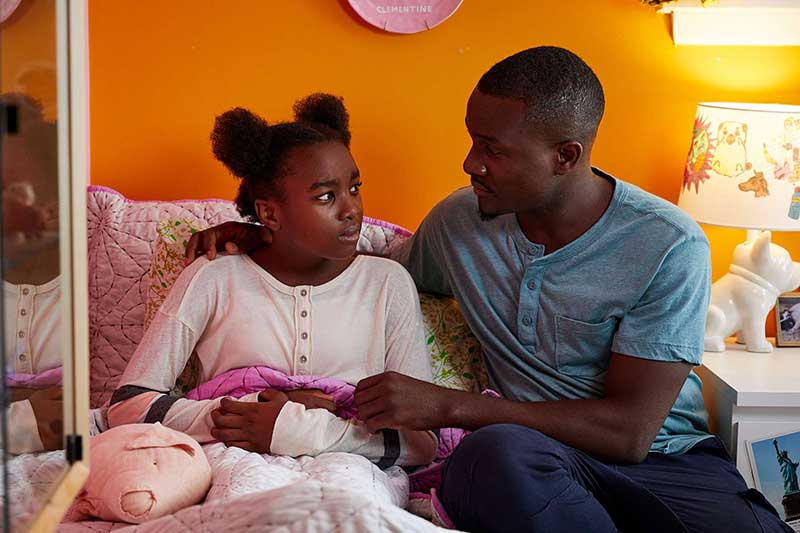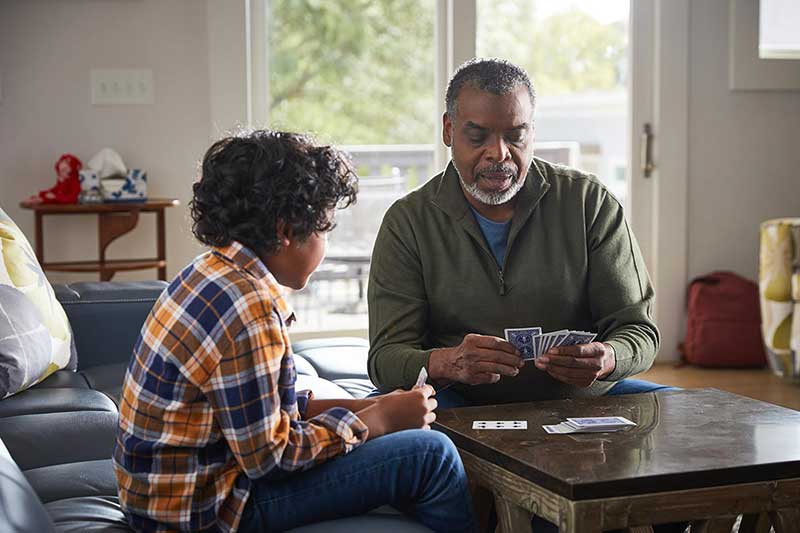Talking to Kids About the News and Current Events
When newsworthy events happen in the world, kids need help making sense of it all. While you may not have all the answers to their questions (and that’s OK!), there are guiding principles you can follow that help with any type of difficult conversation.
In this article:
Preparing for the conversation
You may feel pressured to respond quickly, but it’s OK to press pause and give yourself a moment before jumping right into a conversation with your kids.
- Acknowledge your own feelings. You are human and have feelings, too! It’s important to take a moment to acknowledge what’s coming up for you. You may be feeling overwhelmed, uncertain, confused or fearful. Whatever you (or anyone) feels is real and valid, so take time to notice and acknowledge your feelings.
- Wait until you’re calm. Whether we like it or not, kids watch adults and pay attention to our nonverbal cues and body language. If we are feeling fearful or anxious, they will likely pick up on that and start to feel similarly. As much as possible, try to calm yourself before starting any conversation with your kids.
- Expect questions that you don’t have the answers to (it is more than OK not to know). You may feel like you need to be prepared for anything your child may ask, but that’s unrealistic. Going into the conversation knowing you may not have all the answers can help you feel more at ease. If something does come up that you don’t have an answer for, give yourself permission to let your child know you will think about it and get back to them.
Start a conversation and follow their lead
Your child is looking at you with big eyes, expecting you to answer some of life’s toughest and most complex questions. In these moments, it’s normal to want to protect your kids from things that are scary or confusing, and you may be tempted to downplay it or avoid the conversation altogether. The reality is, they will likely hear about it one way or another, so it’s important they are able to talk about it openly with you. You don’t have to have all the answers, but starting a conversation is the first step.
- Find out what they already know. Before jumping into the conversation, it helps to first determine what your child already knows, so you know what’s on their mind and where to begin.
- Actively listen. Try to eliminate distractions and actively listen. Make eye contact and repeat back what you hear. In addition to listening to what they say, try to pay attention to what they are not saying. Are they fidgeting? Tearful? Are they distracted and having trouble focusing?
- Address incorrect information. If what your child is telling you simply isn’t accurate, gently let them know. Let them know there is a lot of information out there—from friends, family, the internet, social media, etc.—and you can help them figure out what is true and real.
- Keep information simple and developmentally appropriate. As much as possible, we want to inform our kids without overwhelming them or creating more anxiety or fear. When you explain what’s happening, stick to the facts and only give your child what they need to know. Younger children do not need to know the same level of detail as older children and teens. Avoid any graphic images, and keep it developmentally appropriate and straightforward.
- Don’t push it. If they clearly don’t want to talk, that’s OK. Let them know you will be available whenever they are ready.
Provide comfort
- Be honest. It’s normal to want to make your child feel better, but lying about what’s happening can do more harm than good. Kids are smart, and if they think you aren’t telling them the truth, they will try to find the information elsewhere. Additionally, lying, minimizing or dismissing their concerns (for example, saying, “There’s nothing to worry about”) doesn’t take away their fear or make them feel better, and it discourages them from talking about it.
- Validate your child’s feelings. Even if you don’t feel the same way, whatever your child feels is real and valid. Show them you understand by listening, repeating back what you hear, and letting them know their feelings are normal and OK.
- Practice healthy coping skills. There isn’t a magic word or action that will automatically make you or your child feel better, but practicing healthy coping skills can reduce stress. Whether it’s journaling, listening to music, creating art, dancing or going for a walk, learning how to cope can make your child feel better in the moment and help them become more resilient, so they can handle life’s ups and downs.
- Focus on what you can control. It’s normal to feel overwhelmed and uneasy when we think about all the unknown and worst-case scenarios. Help your child accept the unknown and focus on the present moment, or the here and now. Encourage them to focus on what is within their control, by taking deep breaths and thinking about ways that they can keep themselves safe.
- Limit your exposure to the news and social media. Even without a stressful event or situation happing in the world, receiving constant alerts and notifications can make us feel more anxious. Encourage your entire family to take breaks from the news and social media. Put phones away during mealtimes, and shut off all electronics at least an hour before bedtime.
Keep the conversation going
This may not be the first tough conversation you’ve had with your child about the news and current events, and it certainly won’t be the last. Here are some tips for keeping the conversation going:
- Create opportunities for ongoing conversation. Whether it’s during dinnertime or on the drive to school, let your child know you are available whenever they have questions or want to talk about anything.
- Co-view media together. Make time to look at media with your child. Press pause or stop scrolling, and discuss what you are hearing and seeing together. This helps you gain insight into what and how your child is thinking and feeling, and it also lets your child know it’s OK to ask questions and talk to you about tough topics. We know it’s not always possible to co-view—especially with older kids and teens—so be sure to teach your child how to find credible sources and encourage them to come to you if they are ever unsure. You also have the option to use parental controls on devices and media and to create a house rule where screens can only be used in public areas of the home and not in bedrooms.
- Keep your cool. Your child may disagree with what’s happening or have a different view than you, and that’s OK. Try to stay calm and not overreact, so they know it’s safe to talk to you and share their opinion. The goal is for them to feel comfortable coming to you with questions and thoughts. If they feel like they can’t, they will go elsewhere.
- Be a role model. Help your child understand that although we can’t always control others and what’s happening in the world, we do have control over our own actions and responses. Having tough conversations can be a wonderful opportunity for you to model how to discuss different opinions and how to respectfully disagree. It’s important that caregivers teach not just with words, but with their actions. Model how to have empathy by trying to actively listen and understand another person’s perspective, even when you don’t agree.
When to seek professional help
It’s normal to feel stressed and concerned about scary and confusing things happening in the world. If you worry that your child is struggling emotionally or having difficulty functioning in response to current events (or anything else), don’t hesitate to consult with your healthcare clinician or a behavioral or mental health professional.


